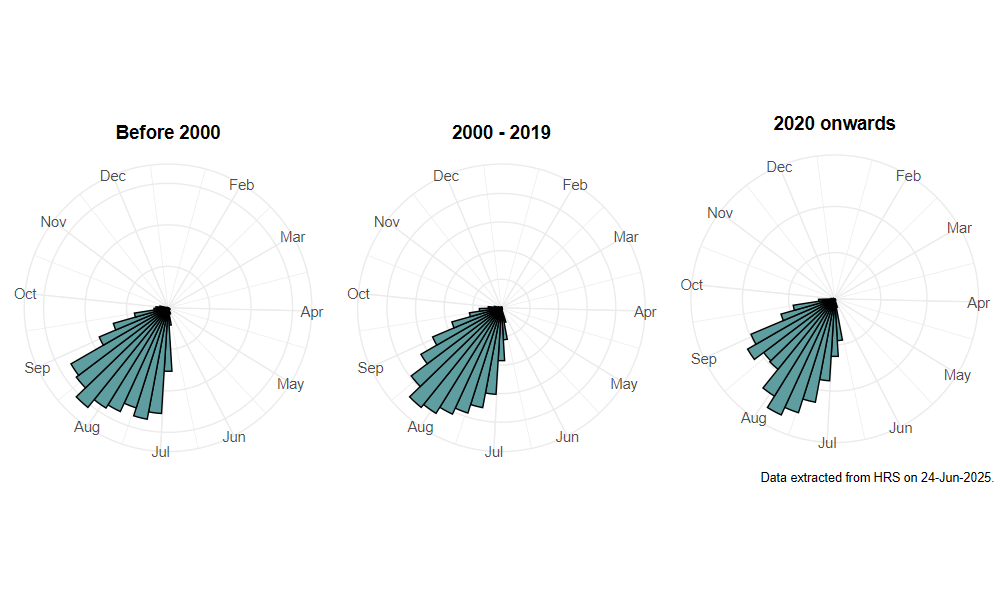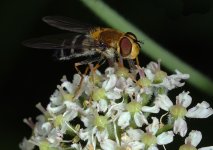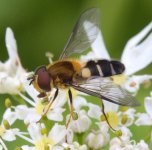Leucozona glaucia (Linnaeus, 1758)
Identification
Identification difficulty = 1. ![]()
![]() according to Ball & Morris, 20241
according to Ball & Morris, 20241
Synonymy
Syrphus glaucius Linnaeus in Coe(1953)2.
Biology
The larva preys on herb layer aphids. A woodland species, typically found in clearings, rides, and tracksides, but also in tall vegetation along roadside hedgerows, scrub, etc. Adults are usually seen visiting flowers, especially white umbels such as Hogweed Heracleum sphondylium and Wild Angelica Angelica sylvestris.
Flight period
The following plots show the number of unique records per week excluding those reported to be of immature stages.

Distribution
Widely distributed in well-wooded lowland areas throughout Britain, but possibly more of a northern and western species than L. laternaria. The gap in distribution in eastern England and East Anglia appears to be genuine, and not an artefact of recorder effort. Where it occurs it can be extremely abundant; this is very evident in northern and western areas where it continues to form a significant part of the 'Hogweed fauna'.

Trends
The following plots show the Frescalo TFactor vs year and a map of the rescaled frequency (all records) for the species.

